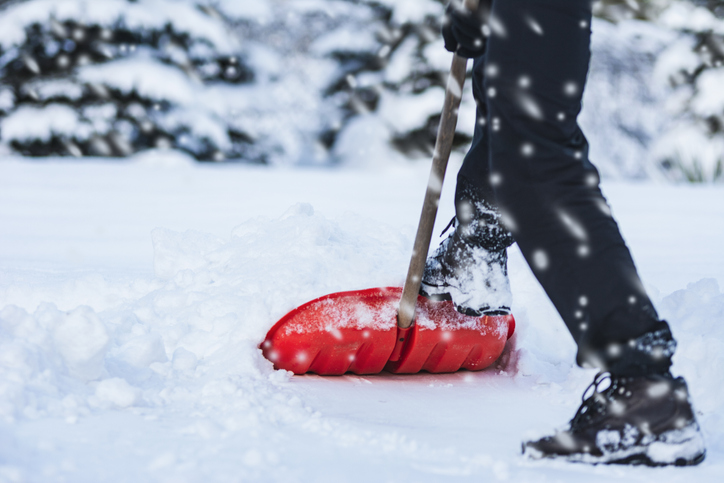Living with Chronic Pain
Snow Shoveling Safety Tips

1 person found this helpful
Print
Share
Save
The first snow of the season is often a beautiful scene. But when a thick blanket of white snow needs to be shoveled, the hard work starts. Shoveling snow can be an exhausting endeavor for anyone, but it can be especially challenging for individuals with chronic pain. Muscle fatigue, low back strain, vertebral disc damage, and even spinal fractures can occur from shoveling snow. However, aches, pain and injuries can often be reduced or prevented if the correct tools and methods are used. Here are some great tips to help avoid injuries and increased pain during a snow-filled winter season!
Be prepared
- The right shovel can make all the difference. A shovel with a curved handle minimizes the need to bend the body.
- A shovel with an adjustable handle length can also minimize the need to bend the back and knees while shoveling.
- A lightweight plastic-bladed shovel lightens the load.
- A small blade may be better than a large blade because only a small amount of snow can fit on a small-bladed shovel, making it a lighter load. Also, a smaller blade puts less stress on the back.
- Stretching the body before shoveling helps prevents injury.
Use proper lifting techniques
- Instead of lifting the snow, push it to the side whenever possible.
- Always face the whole body toward the area of snow that needs shoveling. Both the shoulders and the hips should squarely face the area.
- Always bend at the hips rather than bending at the low back.
- Lift with the legs, not the back!
- Grip the shovel with one hand as close to the blade as possible and the other hand on the handle. Keep the hands 12 inches apart for greater stability.
- Keep loads light.
- Avoid twisting the back when moving snow, instead pivot the whole body.
- Walk the shovel loads to the new location rather than tossing them.
Additional tips
- Fresh snow is lighter than snow that sits for a time. Clear the snow as soon as possible.
- If a lot of snow is expected over an extended period, shovel several times instead of waiting for all the snow to finish falling.
- If any pain is experienced, stop immediately.
- Don't overdo it; take frequent breaks to stretch, hydrate and warm up indoors.
- If dealing with deep snow, take a few inches off the top rather than trying to move the full depth at once.
- Wear shoes/boots with good treads to minimize slipping.
- Use sand, rock salt, or kitty litter on sidewalks and driveways to increase traction on slippery surfaces.
- If possible, use a snowblower. Using a snowblower places less stress on the back than using a shovel.

















